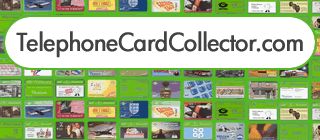UK Phonecard Collecting
Collecting telephone cards in the UK didn't really establish itself as a hobby until the early 1990s, at which point there was reported to be around 100,000 people collecting Phonecards in UK alone. Today in 2026 in the UK far fewer people collect, which is mainly down to the fact that technology in the form of the mobile phone has replaced the need for telecom companies such as BT to issue Phonecards as a method of using their payphone network.
Beginnings of a new hobby
Early 1980s phone cards in the UK, which were issued by British Telecom (BT) contained four different values (10, 40, 100 and 200units) and all took on the same "green faced" appearance. Meaning there wasn't really that much to collect.
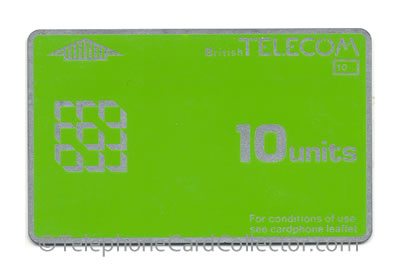
Pictured above - BTD001 1st definitive issue BT Phonecard - these cards first appeared in 1981 and were issued in 10unit, 40unit, 100unit and 200unit denominations.
That though all changed in November 1987 when the first BT optical commemorative Phonecard was issued. Depicting a full colour photo of Regent's Street in London at Christmas, 100,000 copies of the 20 unit card were produced. The card was even mentioned and shown on BBC's Tomorrows World as a collectible item for the future.
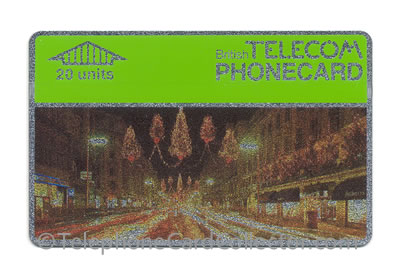
Pictured above - First full colour BT Phonecard issued in 1987, the card depicts Regents Street in London, England, UK at Christmas.
Did you know? A person who collects telephone cards is known as a fusilatelist.
The seemingly endless flow of new issues kept fueling more and more interest from new and younger collectors to take up the hobby. Phonecards were also being issued in ever increasing numbers, again increasing the publics awareness. A good example is the Kellogg's Cornflakes Phonecard (pictured right) that was given away after collecting tokens - some 3,000,000 (3 million) cards were produced. Similar Radio Times also issued a set of 4 cards, again free with the collection of tokens.
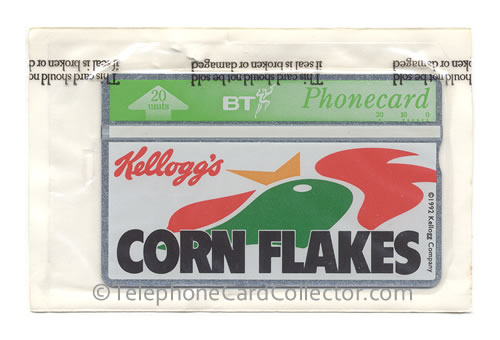
Pictured above - Extremely common Kellogg's Cornflakes BT Phonecard - 3 million Phonecards were produced.
Some collectors, collected used phonecards, while other collected mint cards and others mint and wrapped versions of the cards, like the pictured above sealed example of the Kellogg's Cornflakes BT Phonecard. Though not all cards issued were wrapped.
British Telecom (BT) themselves also set up a club called BT Phonecard Collectors Club (BTCC) and offered members a number of public and private issue cards through the club as well as some rarer and unique cards too.
There were also several clubs set up to support the hobby and one still exists to this day - Telephone Card Club of Great Britain.
Beginning of the end?
After some 15 years (1981-1996) BT decided to update their cardphone payphone technology. Original BT Phonecards used optical/magnetic technology which had become dated, this was replaced in 1996 with new microchip technology.
Some collectors were keen to embrace the new chip cards - being there from day one. While other collectors decided to continue their collections of the now defunct optical cards.
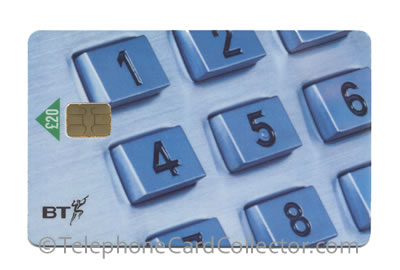
Pictured above - BT Phonecard featuring chip technology and £20 worth of telephone call credit from a BT chipcard payphone.
The BT chip cards lasted just 6 years (1996-2002) before BT finally decided to call time on those Phonecards too. The main reason being that sales and their usage had simply slumped with the advent and increasingly popularity of the mobile phone as the new way to make phone calls.
It was reported in the Evening Standard that at their peak, BT sold £74 million a year worth of the cards. Sales in 2001 had slumped to only £7.2 million, when 92 per cent of phonebox calls were made with coins. Read the Evening Standard story.
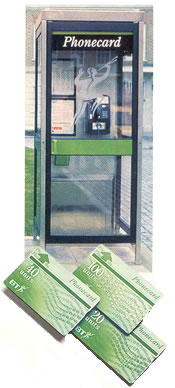 Phonecard collecting hobby lives on?
Phonecard collecting hobby lives on?
Today, there could be as few as 700-1000 collectors in the UK. Though the exact number is difficult to say. What though is clear, with fewer collectors and less demand for telephone cards, the prices paid for cards has fallen from anything up to 95% off their peak in the 1990s. Read more information about BT Phonecards valuations today in 2026.
In 2009, Jill Papworth who herself was a keen phone card collector in the early 1990s wrote an article for the Guardian newspaper entitled "Five things you should never have collected" She writes in her article "Last month, I tested the waters by putting one of my "Papworth Parrot" cards on eBay. Valued in 1993 at £12 on dealers' lists, it managed to fetch just 99p." You can read the Guardian article.
However despite all this, the hobby does still live on and the aforementioned club holds several Phonecard fairs each year - please see 2026 telephone card fairs.
There is also a number of online dealers with Phonecards to sell, but the best place by far (in my opinion) to start or continue collecting Phonecards is the online auction website eBay. Prices for cards typically start at 99p, though sometimes people offer a small collection of cards for around 8p-10p a card. The rarer cards, do of course command a higher price. Typically this is around 10% of what the card was valued in the UK telephone card catalogues.
As for the continued future of collectible phone cards that remains to be seen.
Can you help with the content for this page? If so, please see my contact page.
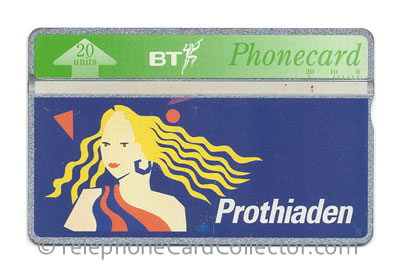
Pictured above - BTM027 Prothiaden medical advertising themed BT Phonecard.
Last updated: 2nd January 2026
Popular Pages
Collector Shop
Site Maps
TelephoneCardCollector.com © 2013-2026
Please do NOT copy any content without prior consent, thank you.
